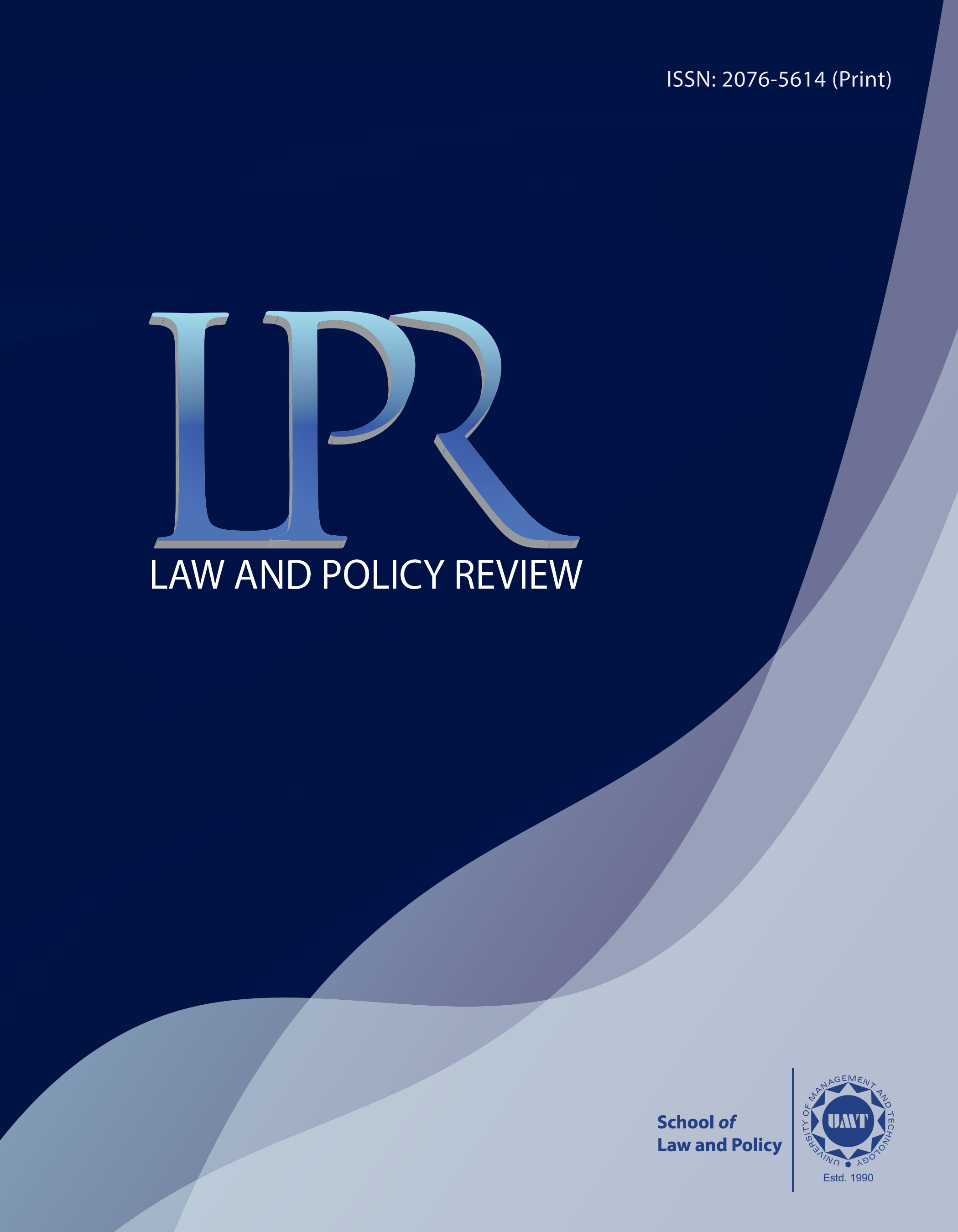Learning from the Mistakes: Time to Rebuild the WTO Dispute Settlement Mechanism
Abstract
 Abstract Views: 48
Abstract Views: 48
Hailed as a “the jewel in the crown”, the WTO dispute settlement mechanism has been central in ensuring security and predictability to the rules of international trade. The WTO Appellate Body attained a central position in the dispensation of justice during the last two decades of its existence. Unfortunately, it has stopped functioning since December 10, 2019 due to the United States’ stance to block the appointment of its members. This stumbling block in the justice delivery system appeared at the worst possible time as the COVID-19 pandemic compelled the member states to adopt various means of trade protectionism in order to shield their domestic industry and to overcome economic losses suffered/sustained during the pandemic. The current trend across the globe leads to the obvious conclusion that the WTO obligations face the danger of subversion. With the increased trade barriers emerging out of the COVID-19 pandemic, more and more disputes are expected to reach the WTO Dispute Settlement Body (DSB). However, in the absence of the Appellate Body, serious questions arise regarding the efficacious dispensation of justice at the WTO level. Due to the lack of faith in WTO dispute settlement, member states may resort to take justice in their own hands and thereby end-up in a vicious circle of retaliatory measures. Such a situation is detrimental to the credibility of the WTO system. Hence, concerted efforts to restore the past glory of the WTO dispute settlement mechanism are indispensable and the current author is of the view that Asian states can take lead in this regard.
Downloads
References
Charnovitz, S. (2017, November, 3). How to save WTO dispute settlement from the Trump administration? International Economic Law and Policy Blog. https://worldtradelaw.typepad.com/ielpblog/2017/11/how-to-save-wto-dispute-settlement-from-the-trump-administration.html
De Andrade, M. (2019). Procedural innovations in the MPIA: A way to strengthen the WTO dispute settlement mechanism. Questions of International Law, Zoom-out, 63, 121–149.
Howse, R. (2002). The Appellate Body Rulings in the Shrimp/Turtle Case: A new legal baseline for the trade and environment debate. Columbia Journal of Environmental Law, 27(2), 489–519.
Howse, R. (2016). The World Trade Organization 20 Years on: Global Governance by Judiciary. European Journal of International Law, 27(1), 9–77. https://doi.org/10.1093/ejil/chw011
Lester, S. (2018, December 19). Persuasive Value vs. Precedent in appellate body reasoning. International Economic Law and Policy Blog. https://ielp.worldtradelaw.net/2018/12/persuasive-value-vs-precedent-in-appellate-body-reasoning.html
Lester, S. (2020, September 01). Can interim appeal arbitration preserve the WTO dispute system? CATO Institute. https://www.cato.org/free-trade-bulletin/can-interim-appeal-arbitration-preserve-wto-dispute-system
Lighthizer, R.E. (2020, February). Report on the Appellate Body of the World Trade Organization. Office of the United States Trade Representative. https://ustr.gov/sites/default/files/Report_on_the_Appellate_Body_of_the_World_Trade_Organization.pdf
McDougall, R. (2017). The search for solutions to save the WTO appellate body. ECIPE Bulletin. https://ecipe.org/wp-content/uploads/2017/12/Bulletin-03.17.pdf
Plus, B. (1999). The Murky Waters of International Environmental Jurisprudence: A Critique of Recent WTO Holdings in the Shrimp/Turtle Controversy. Minnesota Journal of International Law, 8, 343–379.
Third World Network. (2016, May 20). AB members challenge US over reappointment of Seung Wha Chang. https://www.twn.my/title2/wto.info/2016/ti160516.htm
Tirkey, A. (2020, January 13). The WTO’s appellate body crisis: Implications for trade rules and multilateralism. Observer Research Foundation. https://www.orfonline.org/expert-speak/the-wtos-appellate-body-crisis-implication-for-trade-rules-and-multilateralism-60198/
United Nations (2018, December 20). United Nations convention on international settlement agreements resulting from mediation: The “Singapore Convention on Mediation”. United Nations Commission on International Trade Law. https://uncitral.un.org/en/texts/mediation/conventions/international_settlement_agreements
World Trade Organization (2016b, April 14). Argentina - Measures relating to trade in goods and services WT/DS453/AB/R, 14 April 2016. https://www.wto.org/english/tratop_e/dispu_e/453abr_e.pdf
World Trade Organization. (1994). General agreement on tariffs and trade 1994, (GATT 1994), 1867 U.N.T.S. 187. https://www.wto.org/english/res_e/booksp_e/agrmntseries2_gatt_e.pdf
World Trade Organization. (1998, October, 12). United States - Import prohibition of certain shrimp and shrimp products. https://www.wto.org/english/tratop_e/dispu_e/cases_e/ds58_e.htm
World Trade Organization. (2008, April 20). United States: Final anti-dumping measures on stainless steel from Mexico. https://www.wto.org/english/tratop_e/dispu_e/cases_e/ds344_e.htm.
World Trade Organization. (2014, July 22). United States: Countervailing and anti-dumping measures on certain products from China. World Trade Organization. https://www.wto.org/english/tratop_e/dispu_e/cases_e/ds449_e.htm
World Trade Organization. (2015, June 4). India: Measures concerning the importation of certain agricultural products. https://www.wto.org/english/tratop_e/dispu_e/430abr_e.pdf
World Trade Organization. (2016a). Farewell speech of Appellate Body Member Seung Wha Chang. https://www.wto.org/english/tratop_e/dispu_e/changfarwellspeech_e.htm
World Trade Organization. (n.d.). Adoption of GATT dispute settlement reports. https://gatt-disputes.wto.org/disputes/overview/adoption-reports
Copyright (c) 2022 Sandeep Bhat

This work is licensed under a Creative Commons Attribution 4.0 International License.
LPR follow an open-access publishing policy and full text of all published articles is available free, immediately upon publication of an issue. The journal’s contents are published and distributed under the terms of the Creative Commons Attribution 4.0 International (CC-BY 4.0) license. Thus, the work submitted to the journal implies that it is original, unpublished work of the authors (neither published previously nor accepted/under consideration for publication elsewhere). On acceptance of a manuscript for publication, a corresponding author on the behalf of all co-authors of the manuscript will sign and submit a completed the Copyright and Author Consent Form.





